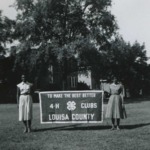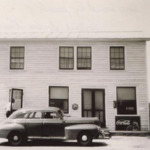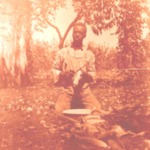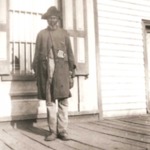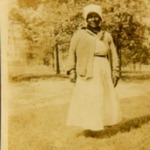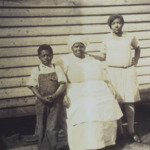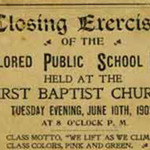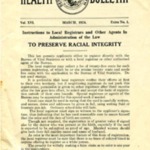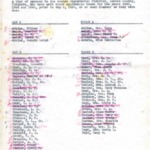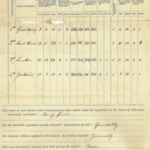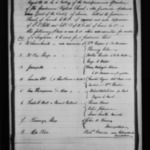Browse Items (14 total)
- Tags: Segregation
Sort by:
Negro 4-H Clubs
During the Jim Crow era every area of life was segregated. In many ways, two parallel universes existed in the South and in Central Virginia; one white and one black. Since agriculture was vitally imporant to white and black farmers in Louisa…
Gordon Family
While many African American families struggled to survive as well as to receive a good education, there were a few families who prospered after emancipation. Reuben Gordon was a former slave who worked on the Garland Plantation. After the Civil War,…
Tags: African American, Segregation
Daily Life
For many African Americans, daily life after slavery was not much different than life in bondage. There was still a struggle for survival for many African American families. Most of the residents of Louisa County lived on farms and until Rural…
Jeff Porter
These images are photos of Jeff Porter and his home. Porter was born sometime in 1849. Throughout his lifetime in Louisa County, Porter lived at Trevillians Depot. We know little more about him than what these photos reveal, except that he was a…
Tags: African American, Segregation
Aunt Dinah Robinson
This photograph is an image of Aunt Dinah Robinson who served as the janitor at the Mineral High School during the era of segregation. In most cases, it was African Americans who worked as the janitors at white schools, and they witnessed the…
Tags: African American, Schools, Segregation
At Poindexter Store
This photograph is an image of three African American individuals outside of the Poindexter Store in Louisa County. The style of clothing of the two women in this photograph suggests that both are domestic workers (the apron and the hats). Often, if…
Tags: African American, Segregation
"WE LIFT AS WE CLIMB"
Early African American schools were designed to advance younger generations of African Americans. Within this community of individuals there was a belief that, as an African American became more educated and continued to exceed in society, the…
Tags: African American, Churches, Schools, Segregation
Instructions for Registration/Racial Integrity laws
This document is a pamphlet directing Local Registrars and "Other Agents in Adminstration of the Law" on how to register indivduals on birth certificates. This pamphlet also contains a copy of the Racial Purity Act laws (for use at the discretion of…
Tags: African American, Civil Rights, Segregation
Race and Vital Records
This document is a letter from the Virginia State Registrar to all Local Registrars in Virginia demanding that the physicians and midwives take better care when writing ceritificates of birth and death. He explains that these certificates will become…
Tags: African American, Civil Rights, Segregation
Delinquent Land Sale
This document is a notification of an auction that is scheduled to be held at the front door of the Louisa Courthouse on the first Monday in January of 1936. The items in up for auction are tracts of land whose owners failed to pay the taxes on the…
Voting Registration: Black
This document is a voting registration sheet that gives the names of all black ("colored") men and women who are registered to vote in the year 1946. The document states that the individuals on the document (all residents of the Louisa Courthouse…
Tags: African American, Civil Rights, Segregation, voting
Voting Registration: White
This document is a voting registration sheet that gives the names of all white men and women who are registered to vote in the year 1946. The document states that the individuals on the document (all residents of the Louisa Courthouse District) had…
Tags: Civil Rights, Segregation, voting
Louisa County Schools 1884
William Jackson Walton served as the Superintendent of the Jackson District from 1871 until 1884 when he became one of the earliest Superintendents of Schools in Louisa County. As Superintendent, Walton kept records of how many schools were in each…
Proposed African American Schools
“Schools may have been opened sooner in this district [Louisa Courthouse District] than some others, because the County seat was located here, it was more accessible, more thickly populated and easier for a number of people to assemble for…
Tags: African American, Reconstruction, Schools, Segregation
